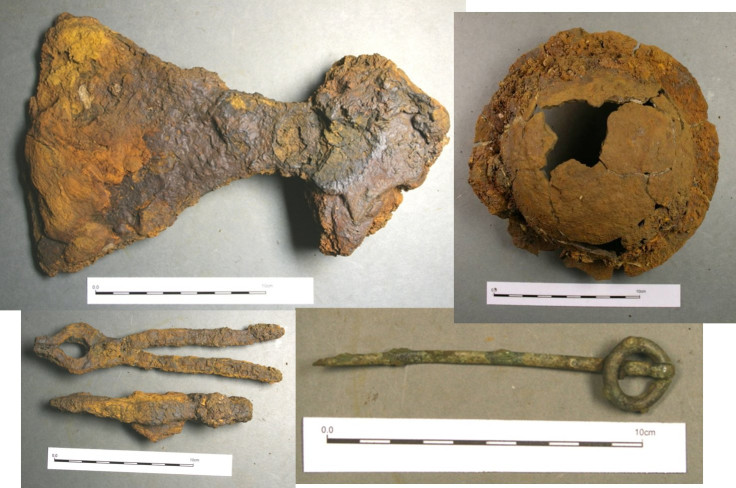First Viking boat burial found on UK mainland reveals mystery occupant was a high-status warrior
The burial found in Western Scotland is one of the few ever discovered and documented outside Scandinavia.
The first intact Viking boat burial discovered on the UK mainland, in Western Scotland, might have been that of a wealthy warrior. Although his identity remains a mystery, rich grave goods point to the deceased's high-status.
Viking boat burials were relatively rare, but they have captured the imagination of all those interested by the Norse culture. This funerary practice, which involved using the boat as a container for the body, has mostly been documented in Scandinavian countries, although some boat burials have also been excavated on Scottish islands such as Orkney or Shetland.
In 2011, archaeologists came across an intact Viking boat burial in Swordle Bay, the first even discovered on the mainland, as part of the Ardnamurchan Transitions Project – a project investigating the history the Ardnamurchan peninsula in Western Scotland.
Although this burial is not the most spectacular in size ever discovered, it represents one of the richest example to date. It also confirms the link between this region of the UK and the Viking world.
"We knew that the Ardnamurchan peninsula had a Norse connection, but prior to this discovery, we had found no direct evidence of this. This burial is valuable because it confirms the Norse heritage and history of the place, and adds to our knowledge of the practices associated with Viking boat burials", study author Oliver Harris, from the University of Leicester, told IBTimes UK.
The findings of the full excavation have just been published in the journal Antiquity.
A warrior's burial
The archaeologists have estimated that boat used to bury the deceased dates back to the 10th century, at a time when Vikings were still travelling and exploring the British Isles, and trading with local populations. However, they had not yet established settlements.

Measuring about 5.1 metres, the vessel would have been a small rowing boat, probably accompanying a larger ship. It probably wouldn't have been used to navigate the sea. This was an elaborate interment with a selection of rich grave goods had been placed around the body. These included a ringed pin made in a style that is distinctively Irish – suggesting that a great a range of cultural influences already characterised the objects used by the vikings at the time. A copper alloy drinking horn rim was found close to where the head of the deceased would have been. The different artefacts suggest a notion of high status.
The archaeologists also recovered important objects located that reveal the warrior attributes of the deceased. These included a sword, richly decorated with silver and copper wire, and which was put in the grave missing its tip – a detail that also features in a burial previously recovered in Sutherland. A broad-bladed axe, a shield boss, and a spear were also unearthed from the boat-grave.
"From the grave goods, we can tell that this individual was probably a warrior. At least, it is the image that he is they are conveying in death, although there is no way to know for sure if this was the case in life as well," Harris said.

Of the body itself, only two teeth have survived and have been recovered by the researchers. With Isotopic analyses they have been able to learn about his diet – he ate mostly land-based food. They also found out that he was born in Scandinavia and then travelled to Western Scotland.
"We are lucky that teeth have been preserved because tooth enamel forms in childhood and can be useful to learn about an individual in his infancy, about his diet and his origins. However, with two teeth there is only so much you can say. Clearly, it was an adult, as the teeth show signs of extensive use, but we enter the realm of the speculative when it comes to finding out about the sex and the age," Harris explained.

In other burials where swords have been recovered, the deceased was usually a man, but it does not mean this is necessarily the case here. In the future, more research on the teeth could be conducted to see if DNA remains can be found, and if the sex of this high-status warrior could potentially be inferred.
© Copyright IBTimes 2025. All rights reserved.





















